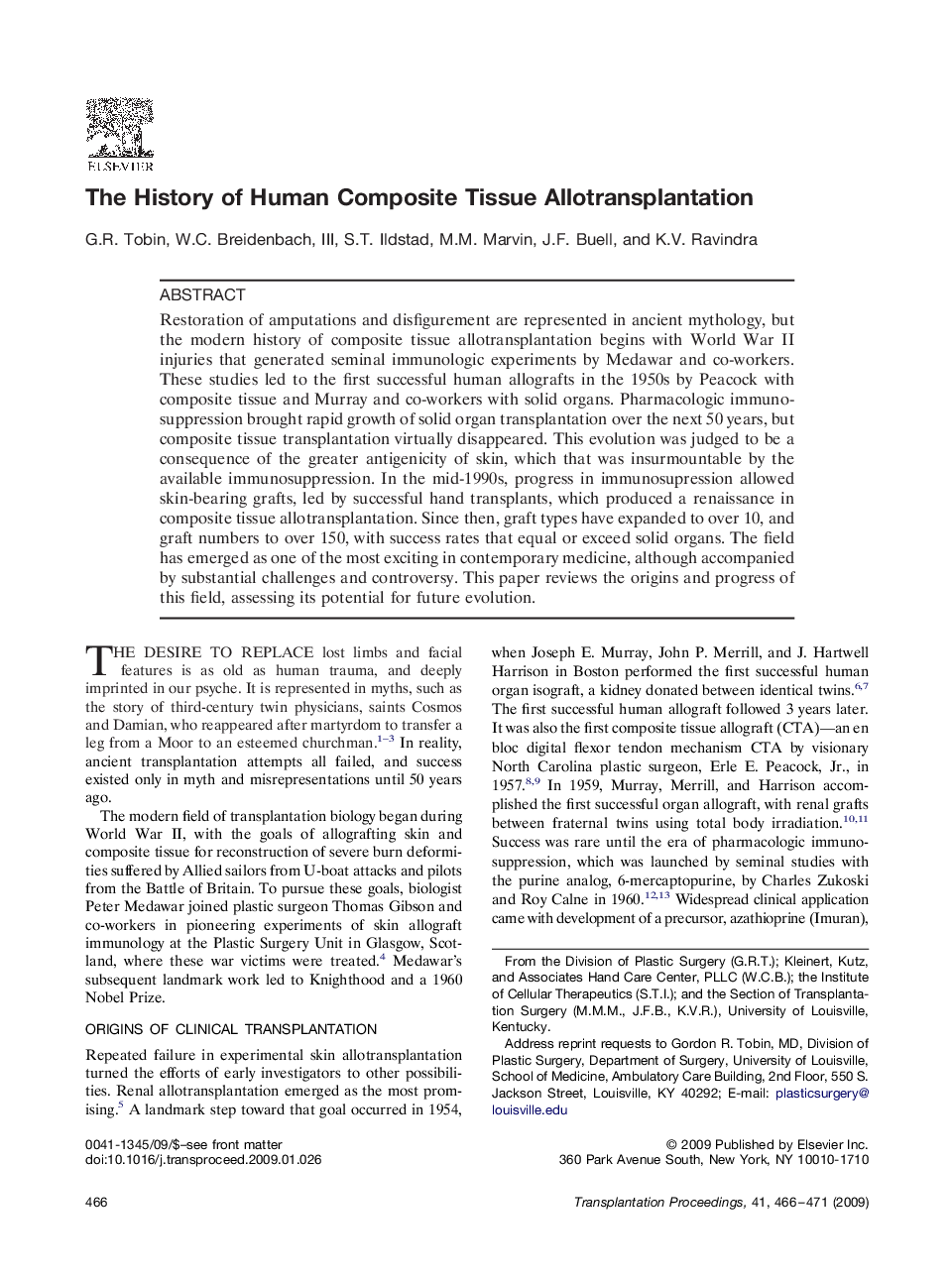| کد مقاله | کد نشریه | سال انتشار | مقاله انگلیسی | نسخه تمام متن |
|---|---|---|---|---|
| 4259498 | 1284573 | 2009 | 6 صفحه PDF | دانلود رایگان |

Restoration of amputations and disfigurement are represented in ancient mythology, but the modern history of composite tissue allotransplantation begins with World War II injuries that generated seminal immunologic experiments by Medawar and co-workers. These studies led to the first successful human allografts in the 1950s by Peacock with composite tissue and Murray and co-workers with solid organs. Pharmacologic immunosuppression brought rapid growth of solid organ transplantation over the next 50 years, but composite tissue transplantation virtually disappeared. This evolution was judged to be a consequence of the greater antigenicity of skin, which that was insurmountable by the available immunosuppression. In the mid-1990s, progress in immunosupression allowed skin-bearing grafts, led by successful hand transplants, which produced a renaissance in composite tissue allotransplantation. Since then, graft types have expanded to over 10, and graft numbers to over 150, with success rates that equal or exceed solid organs. The field has emerged as one of the most exciting in contemporary medicine, although accompanied by substantial challenges and controversy. This paper reviews the origins and progress of this field, assessing its potential for future evolution.
Journal: Transplantation Proceedings - Volume 41, Issue 2, March 2009, Pages 466–471